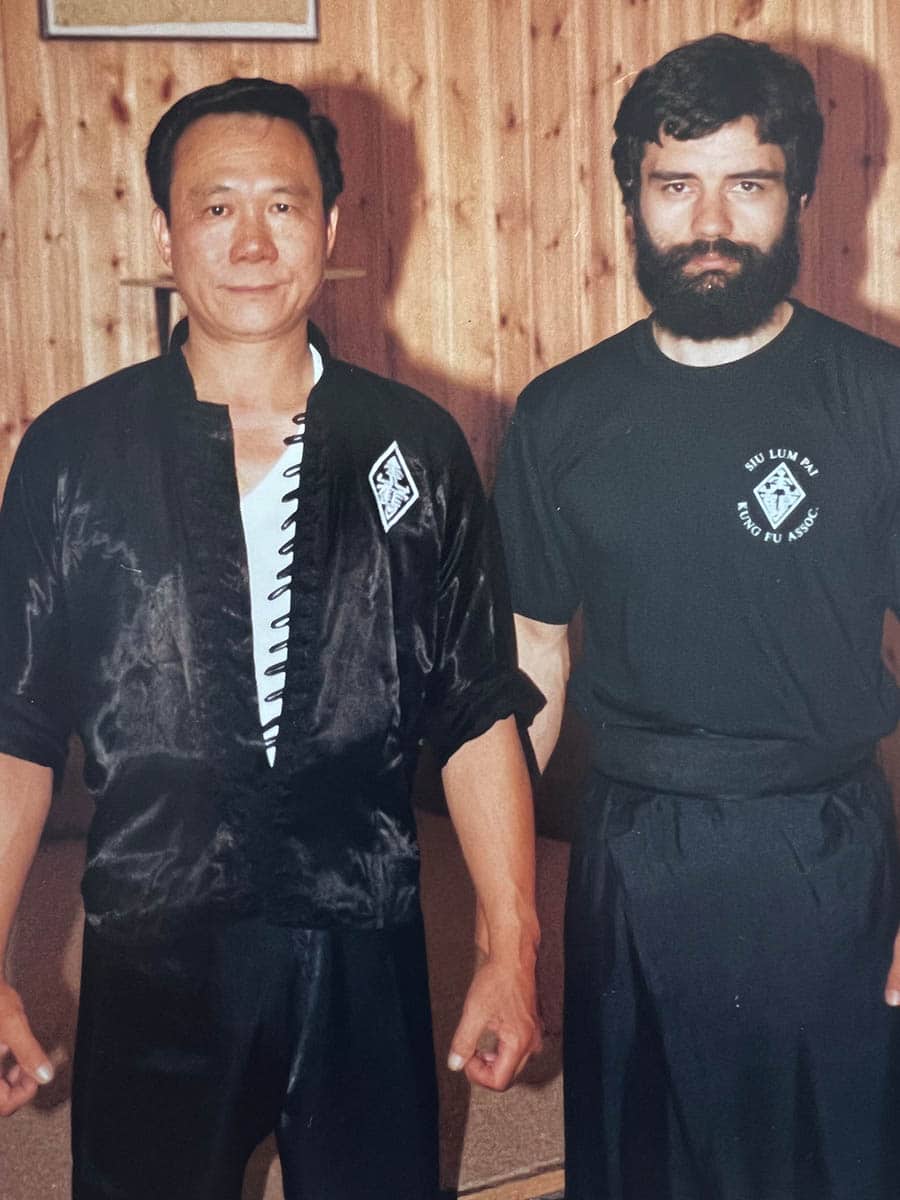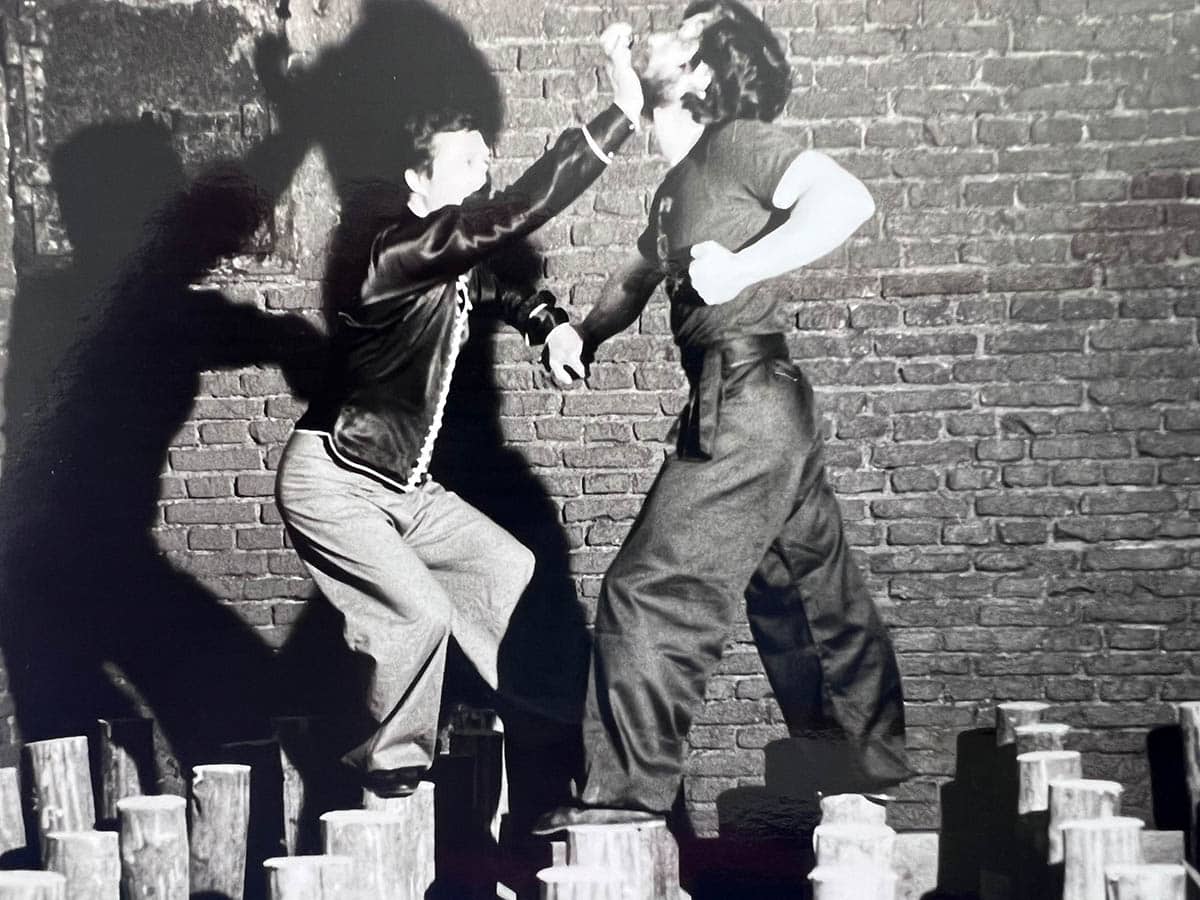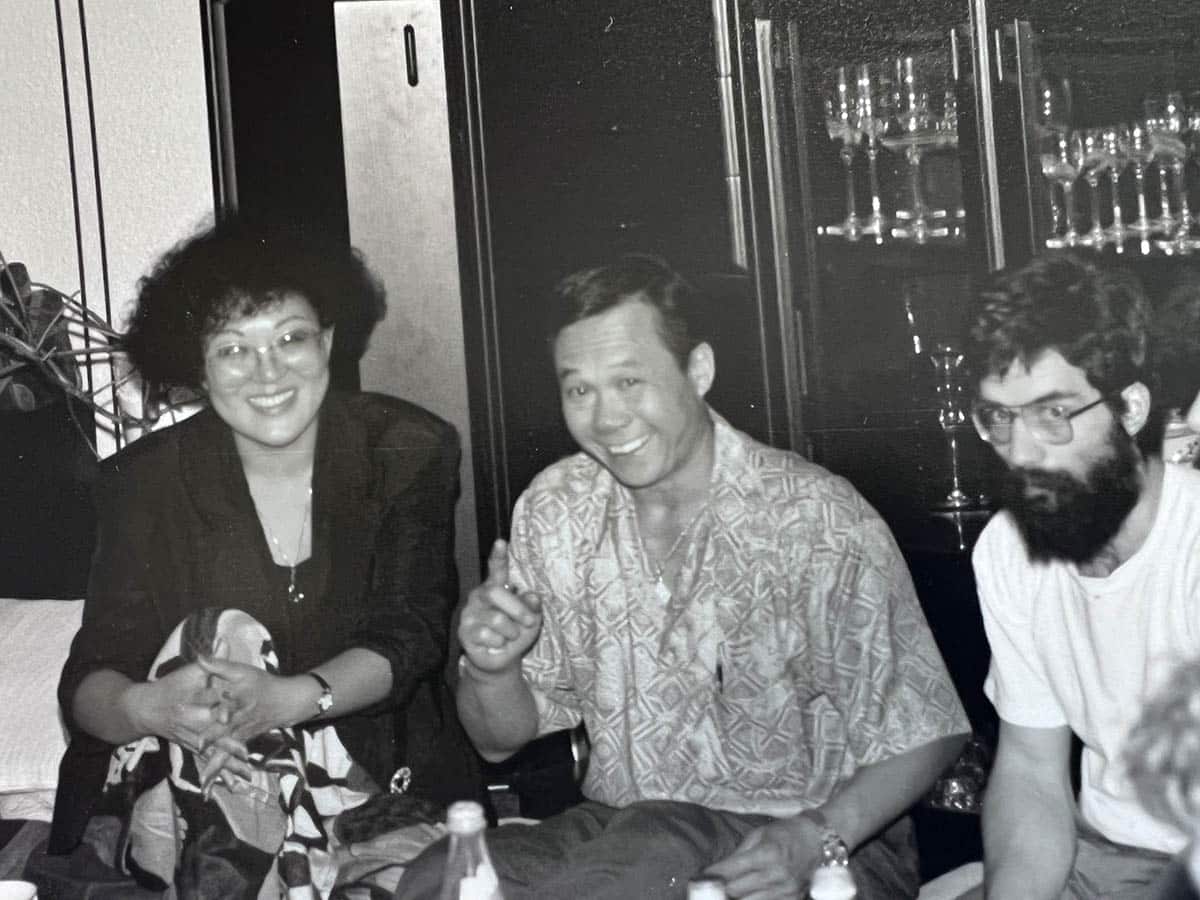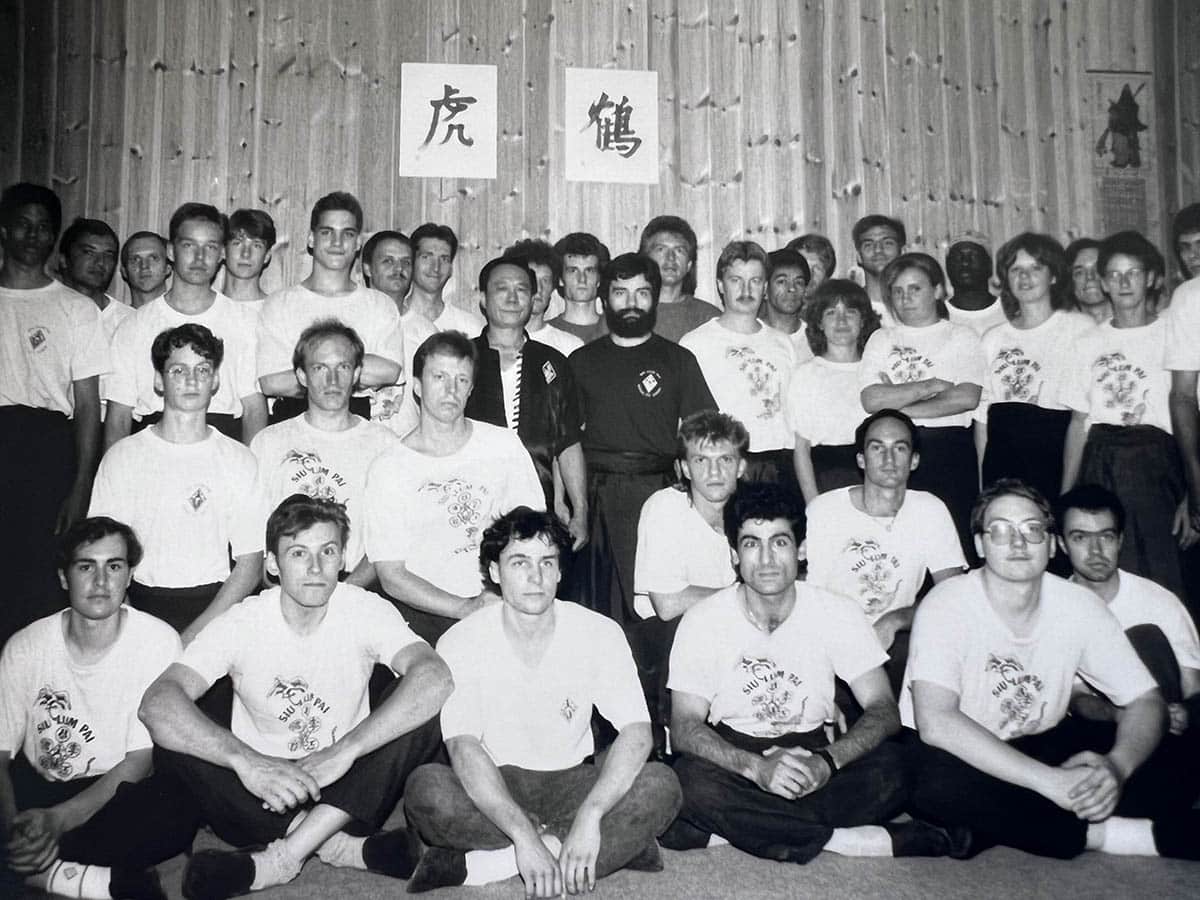
In Memoriam
Grandmaster Bucksam Kong: The Kung Fu rebel and traditionalist
On January 4, 2024, one of the most extraordinary figures in Chinese martial arts passed away. Grandmaster Bucksam Kong. A smile crossed my lips when I did the math: it has now been exactly 50 years since I first called him Sifu. Of course, he will always remain my Sifu in my heart. The Chinese tradition says: "Once my Sifu, always my Sifu." A tradition that has largely been lost and whose deeper meaning is met with incomprehension by most people.
Timeline
Born in Hong Kong in 1940, he began learning the eagle claw style from his mother in 1946. In 1948, he began lifelong studies with Grandmaster Lum Jo. In 1961, he served in the US Army and was sent to Korea, where he was soon appointed a hand-to-hand combat instructor. Back in Hawaii, he opened his first Fung fu school in 1963. His first book, Lau Gar, was published in 1969. His second book, Hung Gar Kung Fu, was published in 1972 and became a classic. In 1974, he was honored by being elected "Instructor of the Year" in the famous "Black Belt Hall of Fame". In 1976, he moved to Los Angeles, where his school continued to establish itself. In 1979, he visits Kong's Siu Lum Pai branch in Munich for the first time, where he will hold annual seminars. In 1981 his video "The Tiger Crane Form" is published, in 1982 the school opens in Utah, in 1983 his third book entitled "The Tiger Crane Form" is published. 1985 the school opens in Tulsa, Okla. 1996 another school opens in Mexico, 1997 his book "Gung Gee Fok Fu Kuen" is published in 4 languages. 1998 opens a school in Las Vegas. 1999 releases his video "Gung Gee Fok Fu", more videos follow.
In one of the countless articles that have appeared about him in Kung Fu and martial arts magazines, one was entitled "The Kung Fu Rebel", and I would like to explain why this title describes him really well.
Other times
Let's go back in time for a moment. It's 1962 and many Americans who were stationed in Japan and Okinawa after the Second World War were talking about Judo and Karate. In people's imagination, it was about the famous mysterious "hand edge strike", which causes the opponent to faint immediately. We often see it - not without smiling - in Hollywood films from the 50s and 60s. That was actually it. No one in the West had heard of Chinese martial arts or Kung Fu. The reason was also very simple: there was an unwritten law that said you were not allowed to show this art to the "gwailos", which translates as "barbarians", i.e. any "non-Chinese".
However, the young Kong was stationed in Korea from 1961-62. During his first bayonet combat training, when he repeatedly completely overpowered his instructor - a confident, experienced "sergeant" from the old school - the latter asked him, still completely out of breath: "Where the hell did you learn that?"
He once told me: "Well, as soon as I put a bayonet on my rifle, I practically had a spear in my hands... and I knew a lot about spear fighting...". His fighting skills were so outstanding that he was promoted to instructor practically overnight. The "Hand-to-Hand Combat" manual he left behind was used in the US Army for decades to come. When his service ended, the newly discharged Private Kong went to Hawaii.
The rebel
When some of his friends, who also happened to teach Karate, discovered his extraordinary skills, they immediately wanted to learn "exactly that". So he opened the first Hung Gar Kung Fu school. Much to the displeasure of Chinese society, with whom he had a number of heated quarrels. At the time, this clearly made him a rebel. That was simply not the right thing to do. But Hawaii is also a melting pot for many nationalities. In addition to the natives, there were Chinese, Japanese, Filipinos and white people from the mainland, to name just the most important ones. Such an environment also encourages a certain amount of interchange. Moreover, Hawaiians loved to prove themselves in a fight. The rebel felt that the time had come to break with the old prejudices and open his doors. History proved him right and he really managed well.
As we all know, the 1960s revolutionized many things. The world changed quickly. The general public had their first contact with Kung Fu a little later. Bruce Lee played Kato in the TV series "The Green Hornet" between 1966 and 1967. By the time interest and doors gradually opened, Sifu Bucksam Kong's school had long been established...
The traditionalist
Nevertheless, Grandmaster Kong always remained a traditionalist at heart. A screaming contradiction to the young rebel, which raises the question of whether he was able to reconcile this contradiction. For history teaches us that many "rebels" have failed in other areas. They rebelled and destroyed something irrevocably.
So let's face the question: time passes and we are now in the 70s. Anyone who set foot in his school over 50 years ago, as I did, was immediately confronted with a dense atmosphere that was different from most of the kwoons and dojos that had opened in Los Angeles. The training was strict. The training was tough. You learned to participate and not to complain. No questions were asked. The Chinese family structure was respected: Designations such as Sihing for the older students and Sidai for the younger ones. There were no (and still aren't) belt colors to show off one's degree. All had a long kanvas belt to hold the traditional Chinese pants in place. The grandmaster remained convinced that one distinguishes oneself through hard training and skill and not through a belt color that one presents to everyone.
Traditional ways of teaching were retained, advanced forms and techniques were only taught when the sifu was convinced that the previous ones had been practiced enough. Advanced forms and techniques were not shown in public and were not passed on. You had to earn the respect of your sifu through continuity and loyalty.
I would like to mention another not insignificant aspect that also belongs to the 70s and is difficult for today's generation to imagine. I myself was an enthusiastic, not to say fanatical, martial arts enthusiast and had already visited and trained at a number of schools in various countries. But until late in the 70s and even 80s, the situation was as follows: Most of the teachers who claimed to teach Chinese martial arts hardly knew any Kung Fu. Most of them were Karate instructors who had switched careers due to the Kung Fu craze for economic reasons and had acquired their knowledge from some of the first, sometimes dubious Kung Fu books. China had not yet really opened up to the West. So they were saving up with the few techniques and forms they knew, sometimes talking a lot about them and showing little. When I started my first Hung Gar Kung Fu course in Munich at the end of 1976, the situation was no different. There were a few "Kung Fu schools", but their operators had clearly acquired their knowledge from Kung Fu films and books. In comparison, the knowledge I had already learned from my sifu back then was "huge", which also explained the rapid success of my school. Of course, the situation has changed completely in the last 50 years.
With Grandmaster Kong, it was exactly the opposite. He imparted his enormous practical and profound knowledge, for which, by the way, a whole lifetime was not quite enough to internalize it, in a targeted and generous manner. By the way, this is not a figure of speech but meant literally. Despite my enthusiasm and dedication, to this day I have still not managed to intensively practise and deepen all the methods and exercises he entrusted to me.
So there was less talking and theorizing and more practising. Everyone tried to put into practice the variety of things he taught, because Grandmaster Kong was a practitioner.

Chi - this mysterious "something"
Another very important point that played a major role at the time.
Having been an avid martial arts fanatic in my youth, having dabbled in every possible school that was available, at least at the time, it was striking that so many spoke of this 'something' that was beyond the physical. A mysterious inner or spiritual force. The terms were as confusing as the thing itself. However, when I met Sifu Bucksam Kong and our arms crossed for the first time, it was abundantly clear that he - didn't talk about it - but clearly had it. Countless anecdotes from his life prove it. And every year when I practiced with him again, it was always immediately clear that there was something here, a power, a pressure, a control that went far beyond his physical strength. It was something final. I have met many people in my life who were physically extremely strong, so strong that it hardly felt human. Nevertheless, this was something else. And it was significant that at the age of 80, this power still vibrated within him.
First summary
To summarize, at a time when there was no Internet, no YouTube, not even videotapes, hardly any Kung Fu books, no DVDs of Shaolin monks available in Chinatown for 10 dollars and - supposedly or in fact - giving away all the forms and secrets, Grandmaster Bucksam Kong had found the right formula. He had opened his doors wide, yet remained a traditionalist. He never sold out his traditional values. He was a rebel, but he remained uncorruptible. He gave us his knowledge from his heart, but you couldn't buy him. Anyone who has dealt with Asian teachers knows how rare this is. It is one thing to talk and boast about tradition, but quite another to practise it.
I would like to give account of an exemplary anecdote.
At a tournament, the still young Sifu demonstrated a part of the "internal iron wire form", the Tid Sin Kuen. One of the most famous Japanese masters of the time, himself the founder of a Karate style, was present at this tournament. This great Sensei told him that he had learned the famous Tiger Crane form (Fu Hok) from the Hung Gar style when he was stationed in Hong Kong. He asked (they talked by drawing Chinese characters on their palms as the Japanese master did not know English) if he could teach him the "internal iron wire form" and offered him 10,000 dollars for it. At the time, 10,000 dollars was an unimaginably high sum. Sifu got out of the affair by asking: "Who did you learn the Tiger Crane form from?" When the Japanese master replied: "From Grandmaster Lum Jo", Sifu said: "Oh, that's my master too, why don't you go and learn it from him as well?" So he got out of the affair, knowing full well that Lum Jo would never teach the Japanese - at least at that time. As I said, he couldn't be bought and remained committed to tradition first and foremost.
The father of Hung Gar in the West
He really deserves this title. Through his book "Hung Gar", which was distributed by Ohara, an internationally renowned publisher and was the second best-selling book of this publishing house at the time (the first was Bruce Lee's), as well as the many articles about this style and its tradition, his tireless holding of seminars from Hawaii to Munich and much more. Not only has he given non-Chinese an opportunity to learn this martial art, but on top of that, no one has done so much to spread and popularize this style. He is definitely the founder of this school in the West.
Hard but heartfelt
As tough as the atmosphere was during practice, it was just as cordial after practice. Now the friendly, sometimes fraternal, even familial atmosphere took over. It was cheerful and relaxed. Grandmaster Kong had no airs and graces. He always laughed at the many "masters" who let themselves be worshipped like great Shaolin monks. This informal manner was in complete contrast to his authority and his extraordinary skill during the lessons and sparring. Everyone could sense it immediately. Size, weight and well-trained muscles played no role. You could tell that he didn't need to put on airs and graces because hardly anyone could get too close to him. And that brings us to another contradictory aspect of this unusual master: he was a fearsome fighter first and a teacher second. This means that his fighting skills were in no way inferior to his profound knowledge.

The fighter
What I mean by this is the following: if one were to artificially divide Kung Fu into three aspects, 1. traditional forms and techniques, 2. exceptional internal and external skills and 3. fighting ability, then it would clearly be the fighting ability that Grandmaster Kong's heart was set on. There are countless anecdotes about his fights, which his students love to tell.
Among his skills: He could tear a phone book in half with a single jerk, or take punches and kicks to the body from any volunteer in the audience during public demonstrations, or break the bones of the forearm with a defensive technique, and much more...
His forms were also flawless. He and some of his most talented students caused a huge stir at public demonstrations, even in front of Chinese audiences.
It is rare to meet masters who excel in all three aspects. Many can fight well, others can impress with skills, others can perform forms exceptionally well... It is extremely rare for someone to impress with all three aspects.
In contrast, I always noticed his modesty. Both at school and in everyday life. This was another reason why he was appreciated and respected by martial artists from all walks of life. Many of the famous masters of the time were friends with him. Everyone felt comfortable around him and received a friendly welcome. Because of his great success, there were challenges at his school in Hawaii. However, there was no compromise on the fighting mat. When fighting, the friendly, then young Chinese man turned into a ferocious tiger who at once quickly finished the job. After everyone who came was forced to acknowledge his superior skill in no time at all, friendships were often formed. In fact, he represented the virtues of Hung Gar: modesty, self-confidence, courage.
As bad as this tiger could be on the fighting mat, I experienced him quite differently in everyday life with his family. As I was lucky enough to live with him periodically over the decades, I saw a gentleness in his dealings with his children, his wife, relatives and later his two Rottweilers. He took care of everything from early in the morning. His family meant a lot to him. His beautiful and wise wife, our Simo Nancy, to whom he was married for over 60 years, supported him throughout his life. His son Andrew, a Doctor of Chiropractic with a practice in Chicago, who has long since earned the title of Master, has taken up the family banner. If a person's character is measured by the way he treats his family, then Bucksam Kong was a truly good man.
The tiger strides through difficult times
However, his life was neither a fairy tale nor a constant success story. It had ups and downs. There were serious difficulties to overcome. There were loans to pay off, three great kids to send to college – a notoriously expensive fun in the US. He had both feet on the ground, not some aloof wannabe who blames everything on others. I had the honor of watching him through all his crises over the last 50 years. He often told me about it, but he was never bitter or resentful, because he also lived the other virtues of Hung Gar that he occasionally preached: perseverance and patience. No matter what difficulties he faced, whether financial, familial, health, betrayal from close students or a lot of envy from the martial arts scene, in other words, all the usual suspects that belong to our crazy world, by which our true strength of character is measured. He was spared nothing and was even offered plenty. He always remained calm at heart, usually waving it off with a laugh. His secret was that he didn't take himself too seriously and therefore didn't take these difficulties too seriously. I learned countless lessons from him outside the Kung Fu school about patience, kindness and perseverance, for which I will be eternally grateful. I personally experienced how he was friendly even with people who had evidently harmed him, without resentment, and even did everything he could to make them feel comfortable around him... A quality I greatly admired in him.
To conclude: Grandmaster Bucksam Kong has set us a great, inspiring example: a true master who humbly exemplified the chivalrous virtues of martial arts in everyday life. We will miss him.
With deep gratitude, his student Sifu Alan Baklayan

